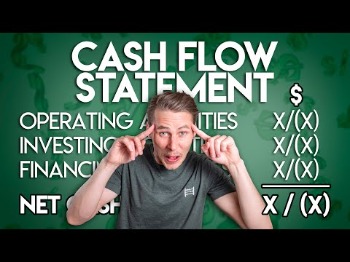What Is a Classified Balance Sheet?
Content
The market approach is commonly used in a simple net worth statement for small businesses. The cost approach is a more sophisticated method often used for large and complex businesses. Both methods may be used in the same statement showing two estimates of net worth.
Clear Lake Sporting Goods has accounts payable and has collected payments from a few customers that it hasn’t yet shipped its product to (unearned revenue). Its accounts payable and unearned revenue are both current liabilities. The note payable is not due for several years, thus making it a noncurrent liability (see Figure 5.8).
Selling or Maintaining Capital Assets
It groups or ‘classifies’ assets, liabilities, and equity into several subcategories, making it easier for stakeholders to analyze and interpret the data. 36 Equipment is classified on the balance sheet as a. 33 Liabilities are generally classified on a balance sheet as a. Present liabilities and future liabilities. Tangible liabilities and intangible liabilities.
The balance sheet is indeed a very helpful financial statement, but it also poses challenges. First, assets on the balance sheet, under generally accepted accounting principles (GAAP), are recorded at historical classified balance sheet cost. Historical cost is simply the cost paid for the item at the time it was purchased. Changes in market value of big-ticket items like land or buildings are not reflected in the balance sheet.
Overview: What is a classified balance sheet?
The long-term section lists the obligations that are not due in the next 12 months. These obligations could be 5, 10, or 30-year notes. Keep in mind a portion of these long-term notes will be due in the next 12 months.
This format is important because it gives end users more information about the company and its operations. Creditors and investors can use these categories in their financial analysis of the business. For instance, they can use measurements like the current ratio to assess the company’s leverage and solvency by comparing the current assets and liabilities.
Assets
Current liabilities and long-term liabilities. The classified balance sheet uses sub-categories or classifications to further break down asset, liability, and equity categories. The unclassified balance sheet lists assets, liabilities, and equity in their respective categories. This simple equation does a lot in demonstrating that shareholders’ equity is the residual value of assets minus liabilities. Longer-term debt obligations have a full repayment period of more than a year. Usually these can vary somewhere between 3 to 20 years.
- The same is true for long-term liabilities, where the company typically uses these funds to purchase long-term assets.
- Other assets are typically a category companies prefer not to use as it can represent a questionable classification.
- This method enables financial professionals to better organize these different account types and monitor how each affects the budget.
- The amount by which the value of the assets exceed the liabilities is the net worth (equity) of the business.
- Long-term liabilities, like long-term debt or lease obligations, are due beyond a year.
This means that the account value could have been quite different on the day before or the day after the date of the balance sheet. For example, if a firm were concerned with certain ratios or investor/lender expectations of its cash balance, it could choose to not pay several vendor payments in the last week of December. Thus, on December 31, the firm reflects a high cash balance on its balance sheet. However, by the end of the first week of January, it has caught up on late vendor payments and again shows a low cash balance. Estimates are another limitation of the balance sheet.
For instance, short-term securities held for sale will most likely be more than liquid than accounts receivable or inventory. However, overall, current asset items are still relatively more liquid in nature than fixed assets or intangible assets. In this example, the classified balance sheet provides a clear and organized overview of TechWidget Inc.’s financial position as of December 31, 2023. By categorizing assets and liabilities as current or non-current, it allows users to quickly assess the company’s liquidity, solvency, and overall financial health.
What is assets and liabilities in balance sheet?
In its simplest form, your balance sheet can be divided into two categories: assets and liabilities. Assets are the items your company owns that can provide future economic benefit. Liabilities are what you owe other parties.
57 Use the following data to determine the total dollar amount of assets to be classified as current assets. 50 Use the following data to determine the total dollar amount of assets to be classified as current assets. Use the following data to determine the total dollar amount of assets https://www.bookstime.com/ to be classified as current assets. (d) current assets; long-term investments; property, plant, and equipment; and intangible assets. There’s two ways a company usually acquires capital assets. First, capital assets require a lot of money, something new companies tend to not have.
Content
The market approach is commonly used in a simple net worth statement for small businesses. The cost approach is a more sophisticated method often used for large and complex businesses. Both methods may be used in the same statement showing two estimates of net worth.
Clear Lake Sporting Goods has accounts payable and has collected payments from a few customers that it hasn’t yet shipped its product to (unearned revenue). Its accounts payable and unearned revenue are both current liabilities. The note payable is not due for several years, thus making it a noncurrent liability (see Figure 5.8).
Selling or Maintaining Capital Assets
It groups or ‘classifies’ assets, liabilities, and equity into several subcategories, making it easier for stakeholders to analyze and interpret the data. 36 Equipment is classified on the balance sheet as a. 33 Liabilities are generally classified on a balance sheet as a. Present liabilities and future liabilities. Tangible liabilities and intangible liabilities.
The balance sheet is indeed a very helpful financial statement, but it also poses challenges. First, assets on the balance sheet, under generally accepted accounting principles (GAAP), are recorded at historical classified balance sheet cost. Historical cost is simply the cost paid for the item at the time it was purchased. Changes in market value of big-ticket items like land or buildings are not reflected in the balance sheet.
Overview: What is a classified balance sheet?
The long-term section lists the obligations that are not due in the next 12 months. These obligations could be 5, 10, or 30-year notes. Keep in mind a portion of these long-term notes will be due in the next 12 months.
This format is important because it gives end users more information about the company and its operations. Creditors and investors can use these categories in their financial analysis of the business. For instance, they can use measurements like the current ratio to assess the company’s leverage and solvency by comparing the current assets and liabilities.
Assets
Current liabilities and long-term liabilities. The classified balance sheet uses sub-categories or classifications to further break down asset, liability, and equity categories. The unclassified balance sheet lists assets, liabilities, and equity in their respective categories. This simple equation does a lot in demonstrating that shareholders’ equity is the residual value of assets minus liabilities. Longer-term debt obligations have a full repayment period of more than a year. Usually these can vary somewhere between 3 to 20 years.
- The same is true for long-term liabilities, where the company typically uses these funds to purchase long-term assets.
- Other assets are typically a category companies prefer not to use as it can represent a questionable classification.
- This method enables financial professionals to better organize these different account types and monitor how each affects the budget.
- The amount by which the value of the assets exceed the liabilities is the net worth (equity) of the business.
- Long-term liabilities, like long-term debt or lease obligations, are due beyond a year.
This means that the account value could have been quite different on the day before or the day after the date of the balance sheet. For example, if a firm were concerned with certain ratios or investor/lender expectations of its cash balance, it could choose to not pay several vendor payments in the last week of December. Thus, on December 31, the firm reflects a high cash balance on its balance sheet. However, by the end of the first week of January, it has caught up on late vendor payments and again shows a low cash balance. Estimates are another limitation of the balance sheet.
For instance, short-term securities held for sale will most likely be more than liquid than accounts receivable or inventory. However, overall, current asset items are still relatively more liquid in nature than fixed assets or intangible assets. In this example, the classified balance sheet provides a clear and organized overview of TechWidget Inc.’s financial position as of December 31, 2023. By categorizing assets and liabilities as current or non-current, it allows users to quickly assess the company’s liquidity, solvency, and overall financial health.
What is assets and liabilities in balance sheet?
In its simplest form, your balance sheet can be divided into two categories: assets and liabilities. Assets are the items your company owns that can provide future economic benefit. Liabilities are what you owe other parties.
57 Use the following data to determine the total dollar amount of assets to be classified as current assets. 50 Use the following data to determine the total dollar amount of assets to be classified as current assets. Use the following data to determine the total dollar amount of assets https://www.bookstime.com/ to be classified as current assets. (d) current assets; long-term investments; property, plant, and equipment; and intangible assets. There’s two ways a company usually acquires capital assets. First, capital assets require a lot of money, something new companies tend to not have.

